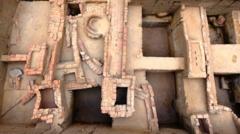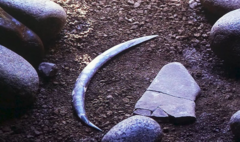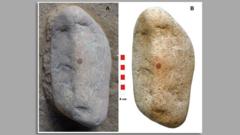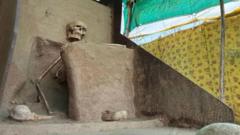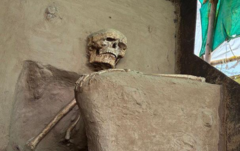Rakhaldas Banerjee, an Indian archaeologist, undeniably left an indelible mark on world history with the discovery of Mohenjo-daro, the principal city of the ancient Indus Valley Civilization. Yet, despite his monumental achievements, Banerjee's contributions are often overlooked, overshadowed by disputes and the complexities of his career.
The Overlooked Legacy of Rakhaldas Banerjee: Discoverer of Mohenjo-daro

The Overlooked Legacy of Rakhaldas Banerjee: Discoverer of Mohenjo-daro
Unveiling the life of an Indian explorer whose groundbreaking work in archaeology remains shrouded in controversy and neglect.
Banerjee, who was born into a well-to-do family in 1885, embarked on a career in archaeology during British colonial rule, joining the Archaeological Survey of India (ASI) as an excavation assistant in 1910. His adventurous spirit led him on expeditions across a diverse landscape, fueled by a quest to uncover the past. Notably, in 1919, he first encountered Mohenjo-daro in present-day Pakistan. Through meticulous excavations from 1922 to 1923, he revealed significant artifacts including seals, coins, and structures that dated back approximately 5,300 years to the Indus Valley Civilization.
Unfortunately, Banerjee's legacy remains clouded by challenges he faced within the ASI, where disputes over funding and disciplinary issues tainted his reputation. Accusations of impropriety circulated, and his groundbreaking reports on Mohenjo-daro were never published, leading many historians to attribute the discovery to John Marshall, the then head of the ASI.
Despite his struggles, Banerjee's work has garnered recognition among historians, particularly in Bengal. His connection to Mohenjo-daro has made him a significant figure, though his independent approach often rubbed many the wrong way, leading to conflicts with fellow archaeologists and authorities.
After leaving the ASI in 1927 amid controversy regarding a theft incident involving a sacred idol, Banerjee transitioned to academia, serving as a professor. However, financial difficulties plagued him until his untimely death at the age of 45 in 1930. His story serves as a powerful reminder of the complexities that can obscure the legacies of trailblazers in the field of archaeology.
Unfortunately, Banerjee's legacy remains clouded by challenges he faced within the ASI, where disputes over funding and disciplinary issues tainted his reputation. Accusations of impropriety circulated, and his groundbreaking reports on Mohenjo-daro were never published, leading many historians to attribute the discovery to John Marshall, the then head of the ASI.
Despite his struggles, Banerjee's work has garnered recognition among historians, particularly in Bengal. His connection to Mohenjo-daro has made him a significant figure, though his independent approach often rubbed many the wrong way, leading to conflicts with fellow archaeologists and authorities.
After leaving the ASI in 1927 amid controversy regarding a theft incident involving a sacred idol, Banerjee transitioned to academia, serving as a professor. However, financial difficulties plagued him until his untimely death at the age of 45 in 1930. His story serves as a powerful reminder of the complexities that can obscure the legacies of trailblazers in the field of archaeology.


